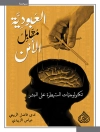For over two decades, many liberals in Israel have attempted, with
wide international support, to implement the two-state solution:
Israel and Palestine, partitioned on the basis of the Green Line –
that is, the line drawn by the 1949 Armistice Agreements that
defined Israel’s borders until 1967, before Israel occupied
the West Bank and Gaza following the Six-Day War. By going back to
Israel’s pre-1967 borders, many people hope to restore Israel
to what they imagine was its pristine, pre-occupation character and
to provide a solid basis for a long-term solution to the
Israeli-Palestinian conflict. style=’font-family: Arial; font-size: 13px;’ />
In this original and controversial essay, Yehouda Shenhav argues
that this vision is an illusion that ignores historical realities
and offers no long-term solution. It fails to see that the real
problem is that a state was created in most of Palestine in 1948 in
which Jews are the privileged ethnic group, at the expense of the
Palestinians – who also must live under a constant state of
emergency. The issue will not be resolved by the two-state
solution, which will do little for the millions of Palestinian
refugees and will also require the uprooting of hundreds of
thousands of Jews living across the Green Line. All these obstacles
require a bolder rethinking of the issues: the Green Line should be
abandoned and a new type of polity created on the complete
territory of mandatory Palestine, with a new set of constitutional
arrangements that address the rights of both Palestinians and Jews,
including the settlers.
Table of Content
Foreword: Yehouda Shenhav’s Beyond the Two-State Solution, Lama Abu Odeh page vii
Acknowledgments xviii
Introduction and Overview: The Crisis Facing Zionist Democracy 1
A line drawn with a green pencil 3
Time and space 6
The degeneration of the 1967 paradigm 7
The Zionist-liberal left and the peace accords 15
The liberal new nostalgia 22
Separation 26
The settlers 29
The political rights of the Jews 32
1 The Roots and Consequences of the Liberal New Nostalgia 35
The ‘no partner’ approach 35
Chasing the yellow wind 38
The academic and intellectual discourse 52
2 Was 1967 a Revolutionary Year? 55
The ‘inevitability’ of the 1967 Occupation of Palestinian territories 55
The denial of political theology 60
3 The ‘Political Anomalies’ of the Green Line 68
The refugees of 1948 68
The Arabs of 1948 74
The Jewish settlers 92
The Third Israel and its political economy 106
4 1948 and the Return to the Rights of the Palestinians 116
The Nakba 117
Eradication and denial 122
The present time of the Palestinian Nakba 131
A shared time 140
5 The Return to the Rights of the Jews 146
Post-Westphalian sovereignty 149
The possibility of sharing one space 154
A comment on the role of intellectuals in times of crisis 164
Notes 169
Index 230
About the author
Yehouda Shenhav is Professor of Sociology and Anthropology at Tel Aviv University.
Dimi Reider is an Israeli journalist and blogger, co-founder and contributing editor at +972 Magazine and occasional contributor to the New York Times, Foreign Policy, the New York Review of Books and the Daily Beast website.












